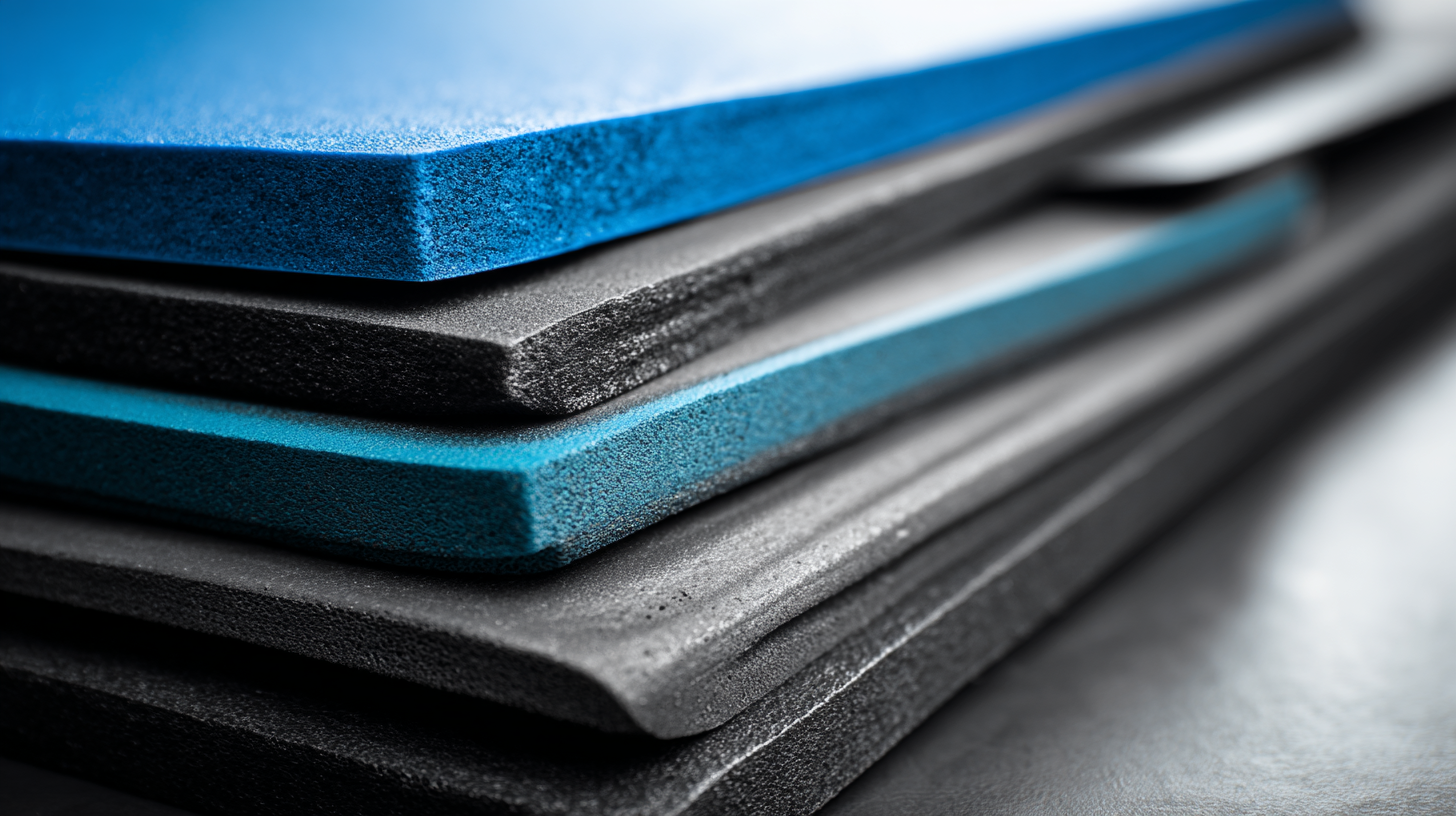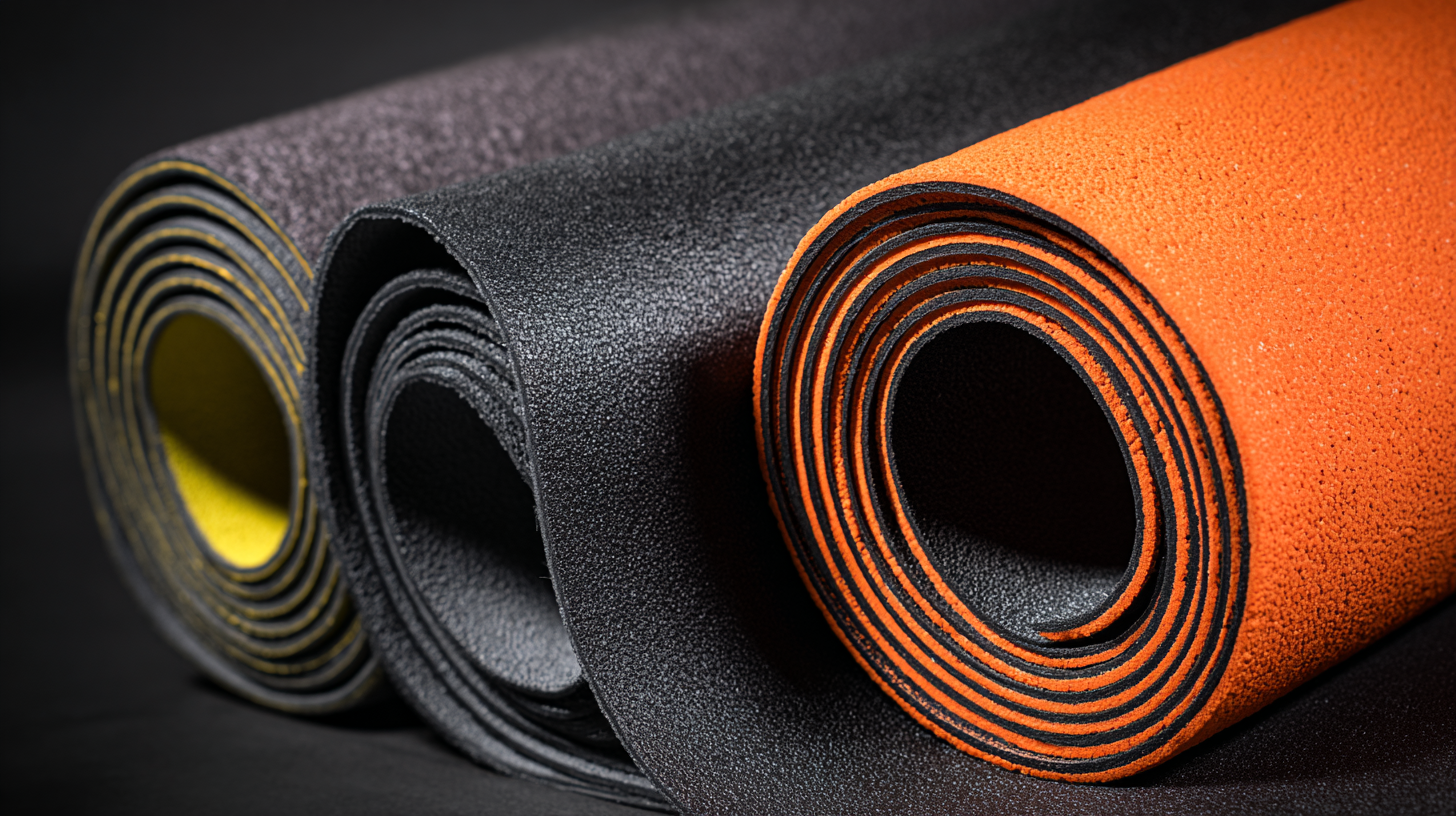The global demand for high-quality exercise equipment has surged in recent years, with rubber exercise mats taking center stage in fitness routines across the world. According to a report by Grand View Research, the global fitness equipment market is expected to reach approximately USD 15 billion by 2025, with a significant contribution from rubber exercise mats, which are favored for their durability, shock absorption, and versatility. As consumers become more health-conscious and exercise routines increasingly shift towards home fitness, the need for reliable and expertly manufactured rubber exercise mats has never been more critical.

Chinese manufacturers are leading the charge, employing advanced techniques and stringent quality control measures to cater to the diverse needs of global buyers. This blog will explore top strategies for navigating this competitive landscape, ensuring that customers receive the best products available in today's market.
The evolution of rubber exercise mats has undergone a remarkable transformation, particularly with the rising emphasis on eco-friendly materials. As more consumers and manufacturers recognize the environmental impact of their products, the 2025 perspective highlights a crucial shift towards sustainably sourced rubber and biodegradable alternatives. This change is driven by an increasing awareness of climate issues and a collective desire for responsible fitness practices.
Furthermore, the integration of innovative manufacturing techniques in China has allowed for the production of high-quality, eco-friendly rubber mats at scale. Manufacturers are now focusing on sourcing materials that not only meet performance standards but are also kinder to the planet. Materials such as recycled rubber and plant-based compounds are gaining popularity, ensuring that workout gear aligns with eco-conscious values. As the demand for these sustainable options continues to grow, global buyers are finding a diverse range of choices that do not compromise on quality or usability, but instead champion a greener approach to fitness.
Emerging technologies are significantly shaping the future of rubber mat manufacturing, particularly in the context of global supply chains and competitive production practices. As industries evolve, manufacturers are harnessing advanced materials and innovative techniques to create high-quality rubber exercise mats that meet rigorous safety standards and ergonomic requirements. This transformation is not only driven by the demand for better products but also by the need for sustainable manufacturing practices that lessen environmental impacts.
Additionally, China's pivotal role in the global supply chain is becoming increasingly relevant. The country has established itself as a leader in manufacturing, with advancements in automation and robotics playing a key role in optimizing production processes. For instance, the integration of AI and IoT technologies is helping manufacturers enhance efficiency and reduce costs while maintaining high standards of quality. As the industrial floor mats market continues to expand, leveraging these emerging technologies will ensure that manufacturers can cater to diverse buyer needs, thus propelling the sector toward a more innovative and sustainable future.
The market for rubber exercise mats has seen a significant surge in demand, driven by increased health awareness and a growing fitness culture globally. As more people gravitate towards home workouts and yoga practices, the requirement for high-quality exercise equipment has catapulted, positioning rubber exercise mats as essential accessories. Manufacturers in China are capitalizing on this trend by emphasizing precision craftsmanship and sustainability, thus catering to discerning global buyers interested in durability and performance.

Moreover, growth projections for the rubber exercise mat market indicate a robust trajectory, with an anticipated compound annual growth rate (CAGR) that reflects the increasing influence of lifestyle changes and fitness trends. The global focus on eco-friendly materials and the demand for multifunctional, portable exercise solutions further amplify this growth. As manufacturers innovate to meet these trends—integrating ergonomic designs and advanced technology—their products not only enhance workout experiences but also align with consumer preferences for quality and sustainability in exercise gear.
In recent years, Chinese manufacturing has emerged as a leader in the production of high-quality rubber exercise mats, thanks to innovative quality control measures. By adopting advanced technologies and stringent testing protocols, manufacturers ensure that their products meet the highest standards. This emphasis on quality not only enhances the durability and performance of the mats but also instills confidence in global buyers looking for reliable workout equipment.
When considering the purchase of rubber exercise mats, consumers should pay attention to the manufacturing processes used. Look for products that highlight certifications, such as ISO 9001, which indicates adherence to quality management systems. Additionally, reviewing customer feedback can provide insights into the longevity and effectiveness of the mats.
Another crucial tip is to check the materials used in the manufacturing process. Mats made from high-quality rubber are often more resilient and offer better traction during workouts. Always inquire about the sourcing of materials and the production techniques employed to ensure that you are investing in a superior product that will stand the test of time.
| Dimension | Material Quality (Rating) | Manufacturing Process | Quality Control Method | Durability (Years) |
|---|---|---|---|---|
| 4' x 6' | A+ | Injection Molding | ISO 9001:2015 | 10 |
| 6' x 4' | A | Compression Molding | ASTM Certified | 8 |
| 3' x 5' | B+ | Extrusion | In-House Testing | 6 |
| 5' x 7' | A | Rotational Molding | 3rd Party Inspection | 7 |
| 4' x 8' | A+ | Blow Molding | Quality Audits | 9 |
In 2025, the global market for rubber exercise mats is anticipated to grow significantly, driven by changing consumer preferences and an increasing focus on health and fitness. As individuals prioritize well-being, manufacturers are responding by designing mats that not only provide optimal functionality but also appeal aesthetically. Enhanced durability, eco-friendliness, and anti-slip technologies are becoming essential features, as buyers seek products that support their active lifestyles while also aligning with their values.
Tips for choosing the right exercise mat include considering the material; opt for mats made from non-toxic, eco-friendly materials that offer comfort and support. Check for grip and thickness, which can affect performance during various workouts. Additionally, think about portability and storage, especially if you plan to use your mat in different locations. A lightweight, foldable mat can make all the difference for those on the go.
As the exercise mat market evolves, the impact of consumer choices will become increasingly evident. Brands that prioritize innovation based on user feedback will likely lead the market, reflecting a broader trend of personalization in fitness equipment. This partnership between manufacturers and consumers will shape the future landscape of exercise gear.

